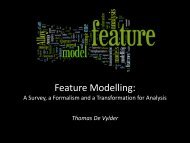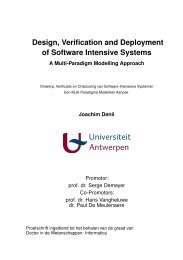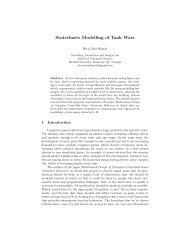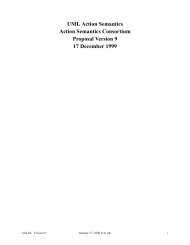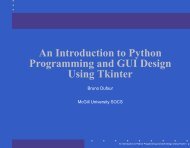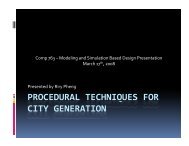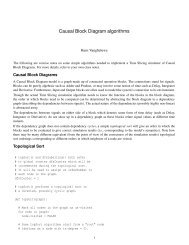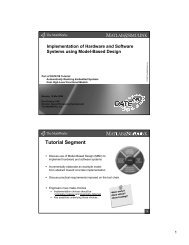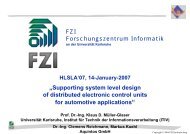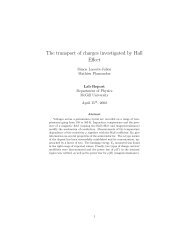Object-oriented framework for modelling and ... - ResearchGate
Object-oriented framework for modelling and ... - ResearchGate
Object-oriented framework for modelling and ... - ResearchGate
You also want an ePaper? Increase the reach of your titles
YUMPU automatically turns print PDFs into web optimized ePapers that Google loves.
etained UML <strong>for</strong> our multimodel designs since they will be more widely read using this graphical nota-<br />
tion. It proposes to various domain experts an unified view of a system <strong>and</strong> helps solving communica-<br />
tion problems (Baskent et al., 2001).<br />
Since the adoption of the Meta <strong>Object</strong> Facility (MOF) recommendation by the OMG in 1997, the<br />
importance of model engineering in the in<strong>for</strong>mation system <strong>and</strong> the software development process has<br />
rapidly increased (Breton <strong>and</strong> Bézivin, 2002). A key role is now played by the concept of meta-model in<br />
new software organisations like the OMG meta-model stack architecture. At the top of this architecture<br />
there is the MOF that provides a language <strong>for</strong> defining meta-models. This meta-meta-model aims at de-<br />
scribing a particular domain of interest by defining a set of concepts <strong>and</strong> relations between these con-<br />
cepts.<br />
A four-layer architecture has progressively taken shape. It is organised as follows:<br />
- M3: the meta-meta-model level (contains only the MOF);<br />
- M2: the meta-model level (contains any kind of meta-model described in UML);<br />
- M1: the model level (contains any model description in UML with a corresponding meta-<br />
model in M2);<br />
- M0: the concrete level (contains any real situation, unique in space <strong>and</strong> time, described by a<br />
given model).<br />
MDA is providing both an environment to define plat<strong>for</strong>m-independent models (PIM) <strong>and</strong> genera-<br />
tion services to map these models to a particular plat<strong>for</strong>m producing a plat<strong>for</strong>m-specific model (PSM).<br />
2.2 Simulation of fire spread<br />
Today, most of ready-to-run software <strong>for</strong> fire spread simulation (Albright <strong>and</strong> Meisner, 1990; Veach et<br />
al. 1994; Finney, 1995; Coleman <strong>and</strong> Sullivan, 1996; Lopes et al. 2002) <strong>and</strong> simulations of fire spreading<br />
8




